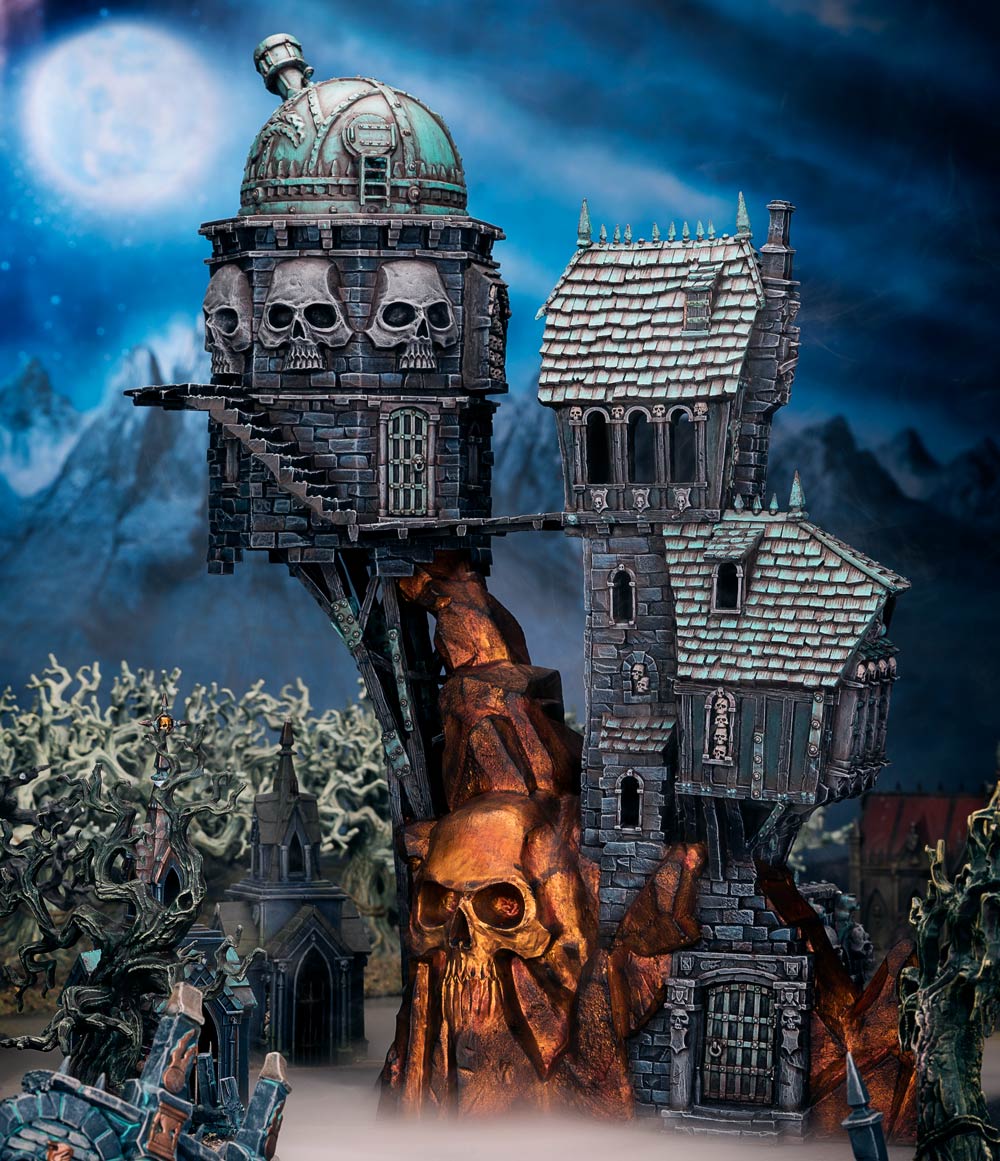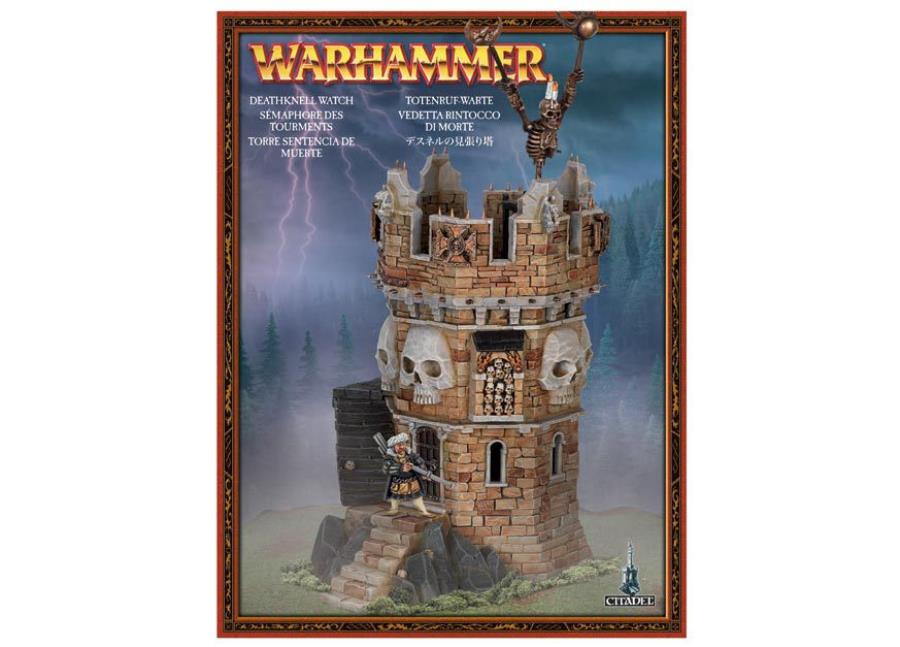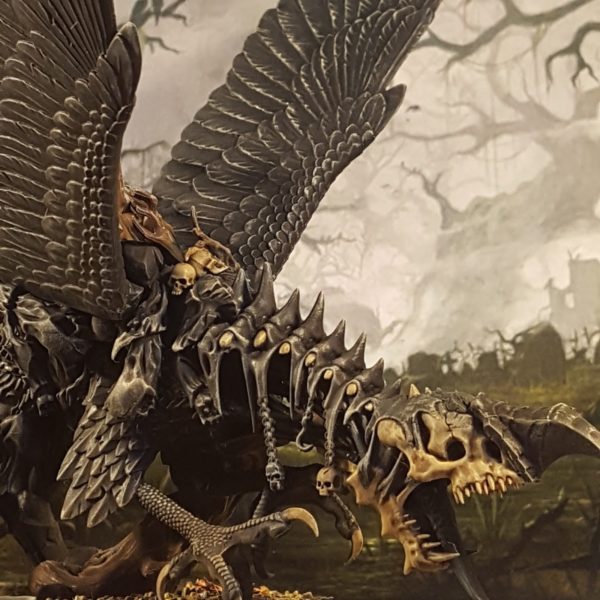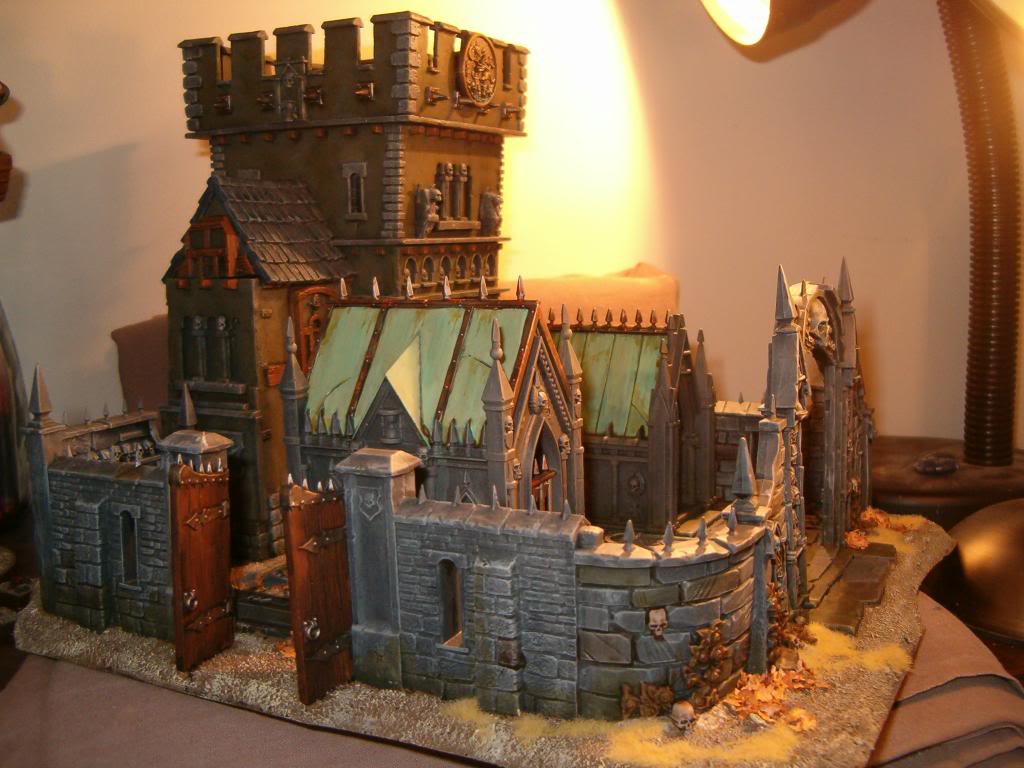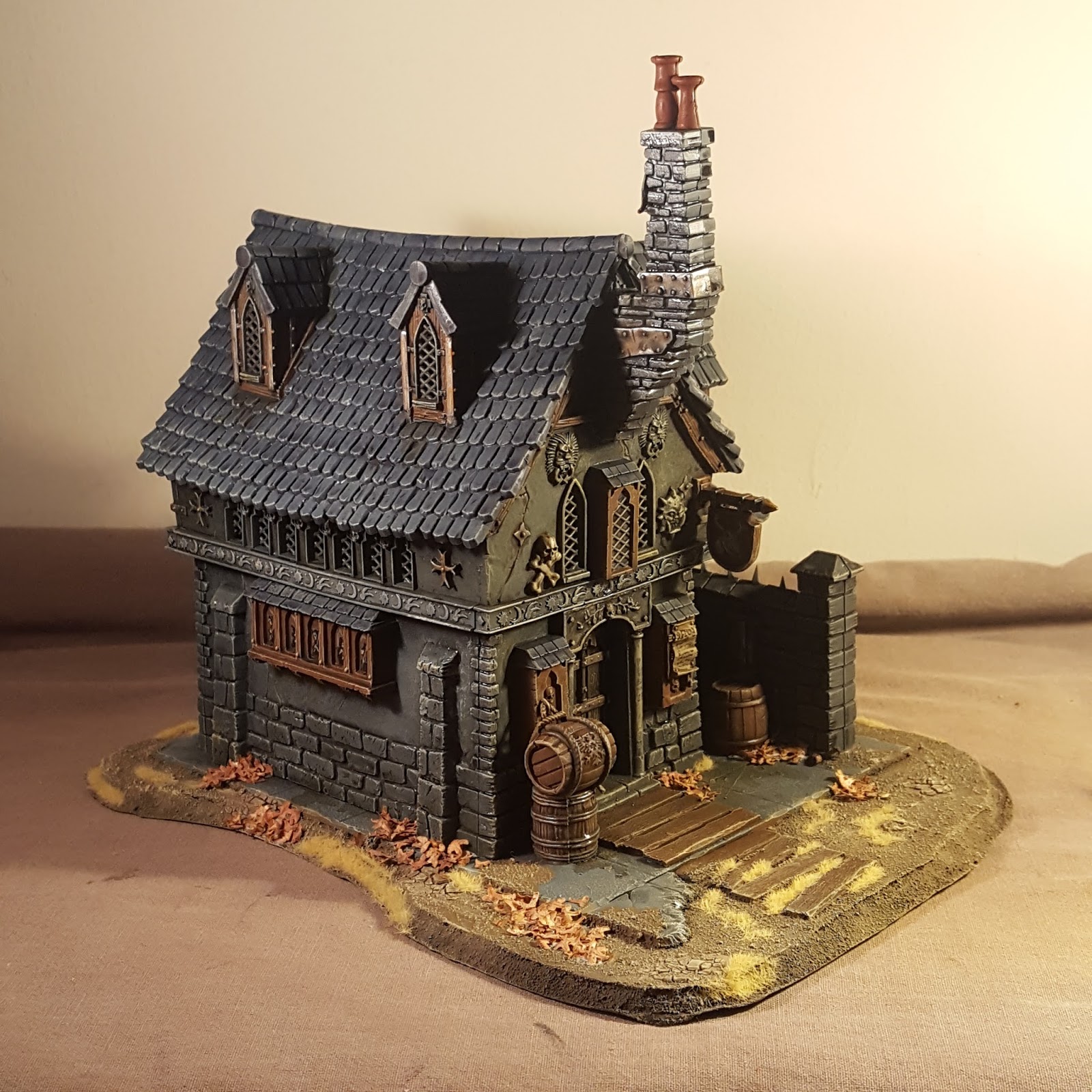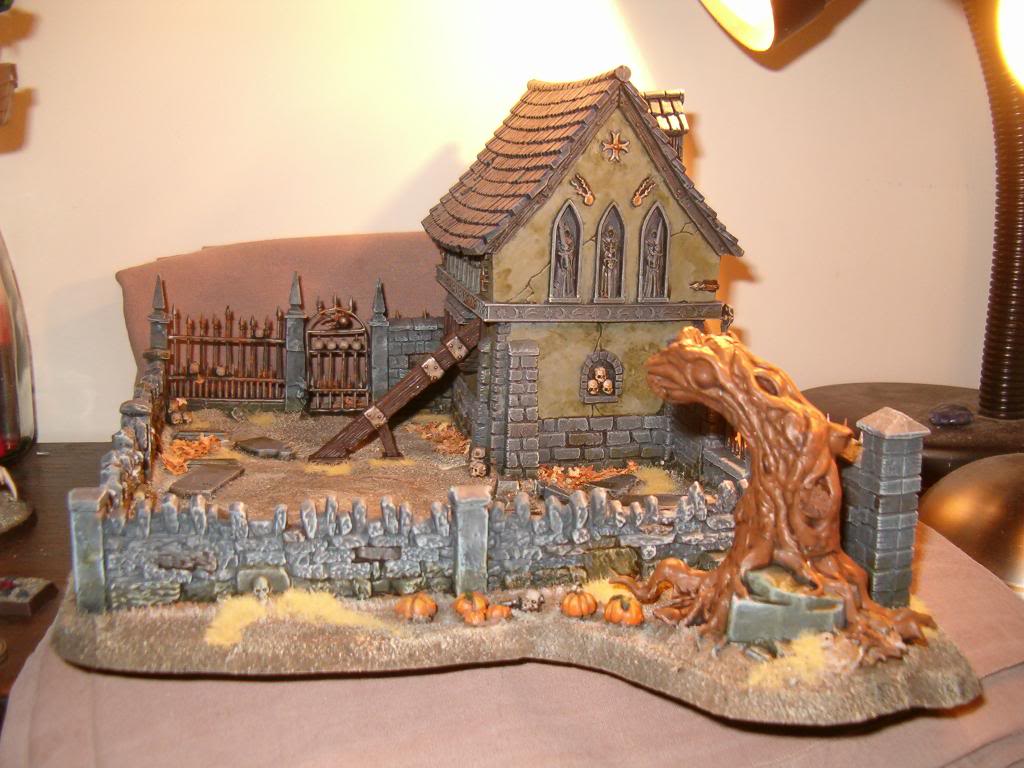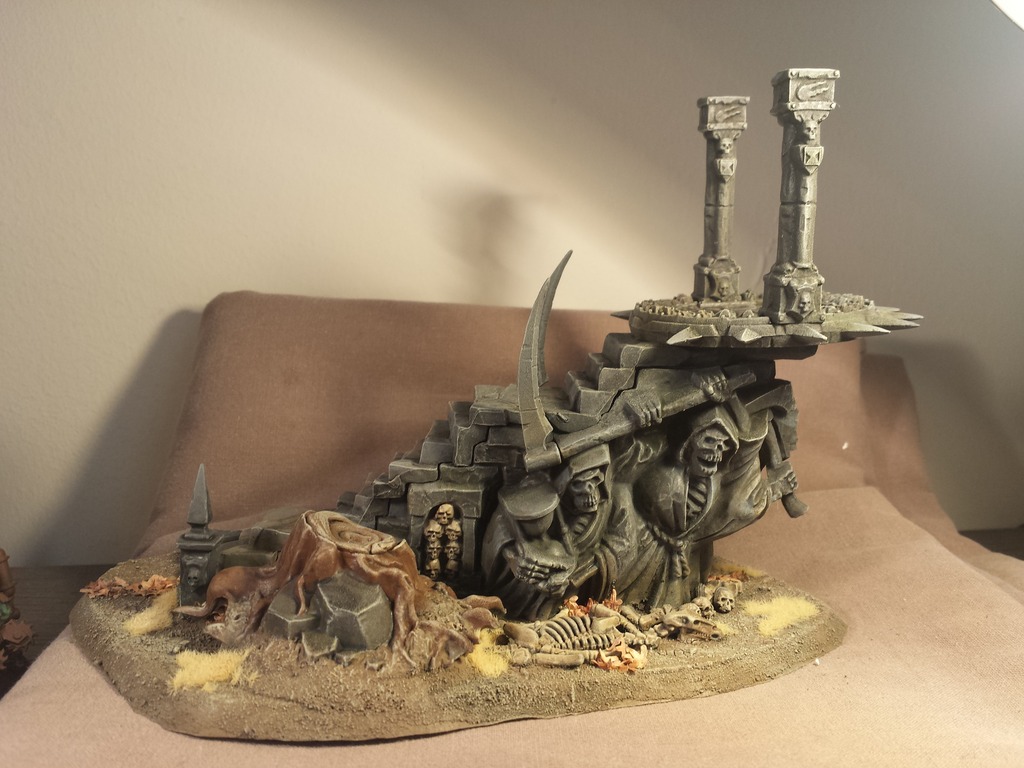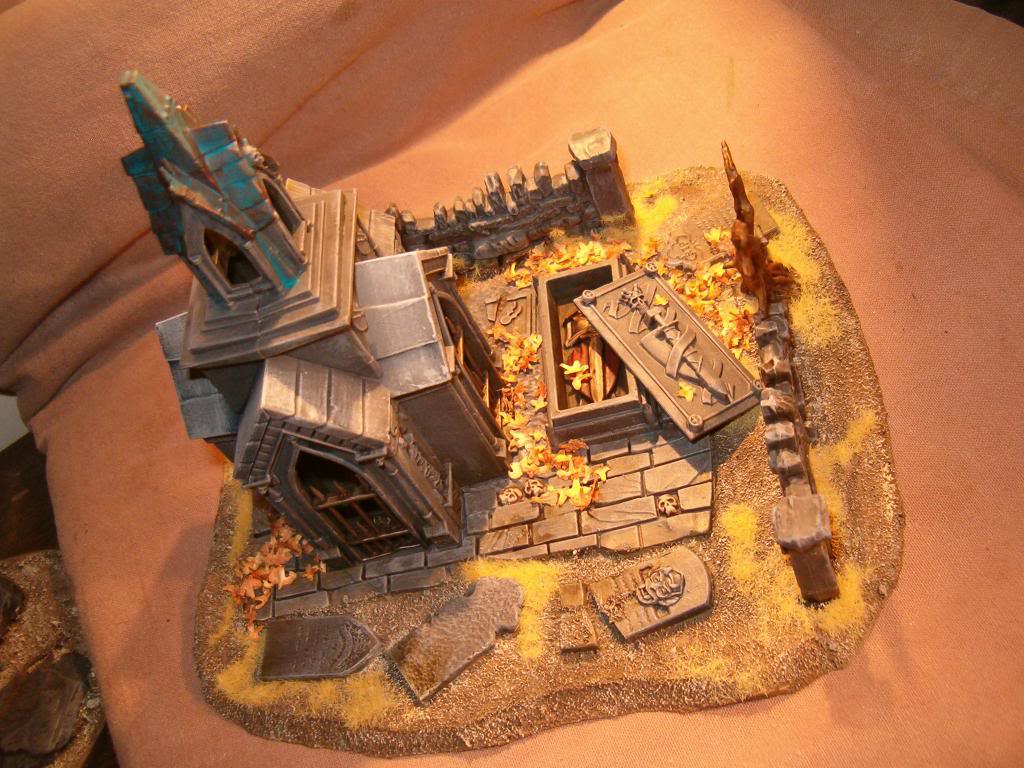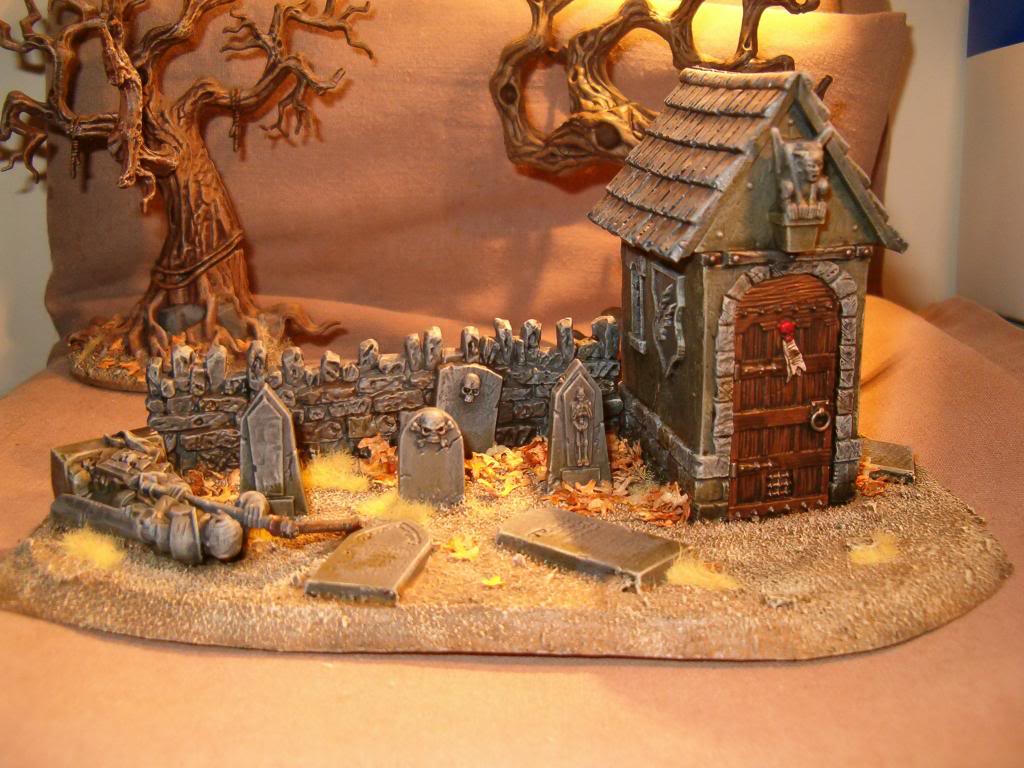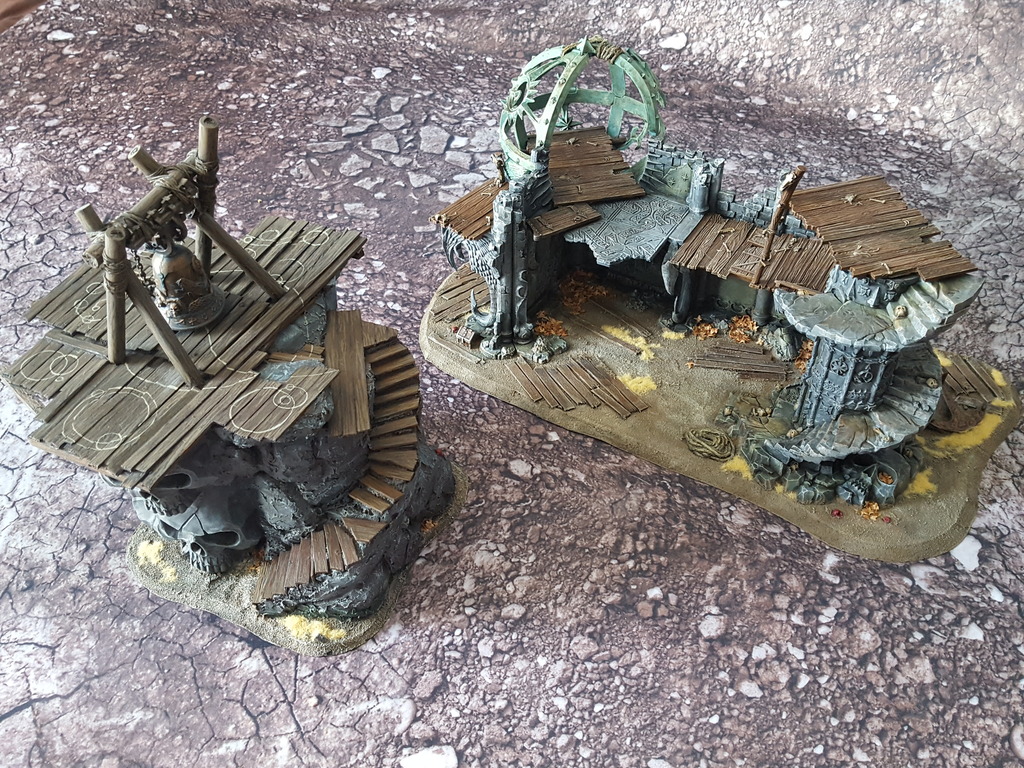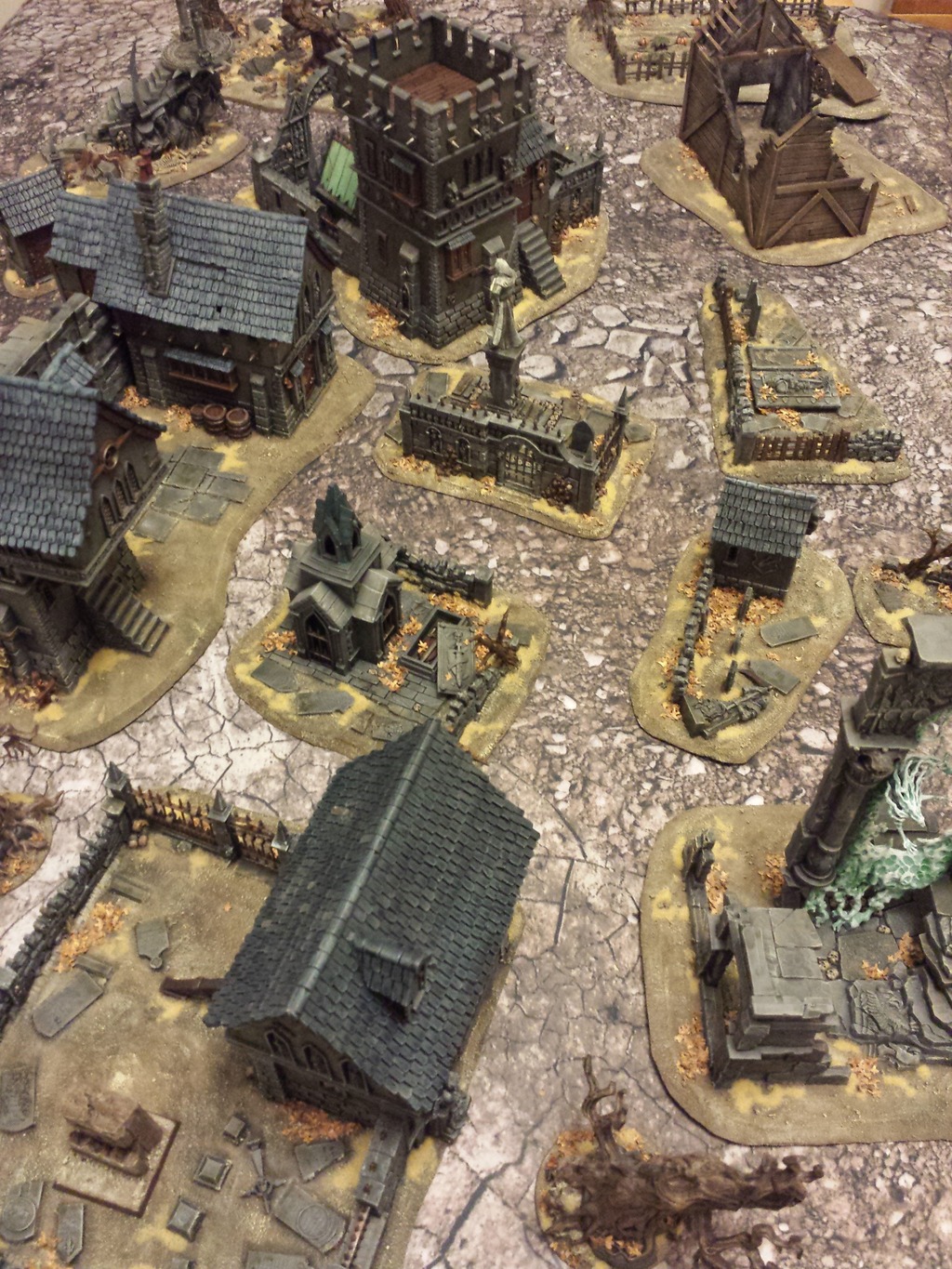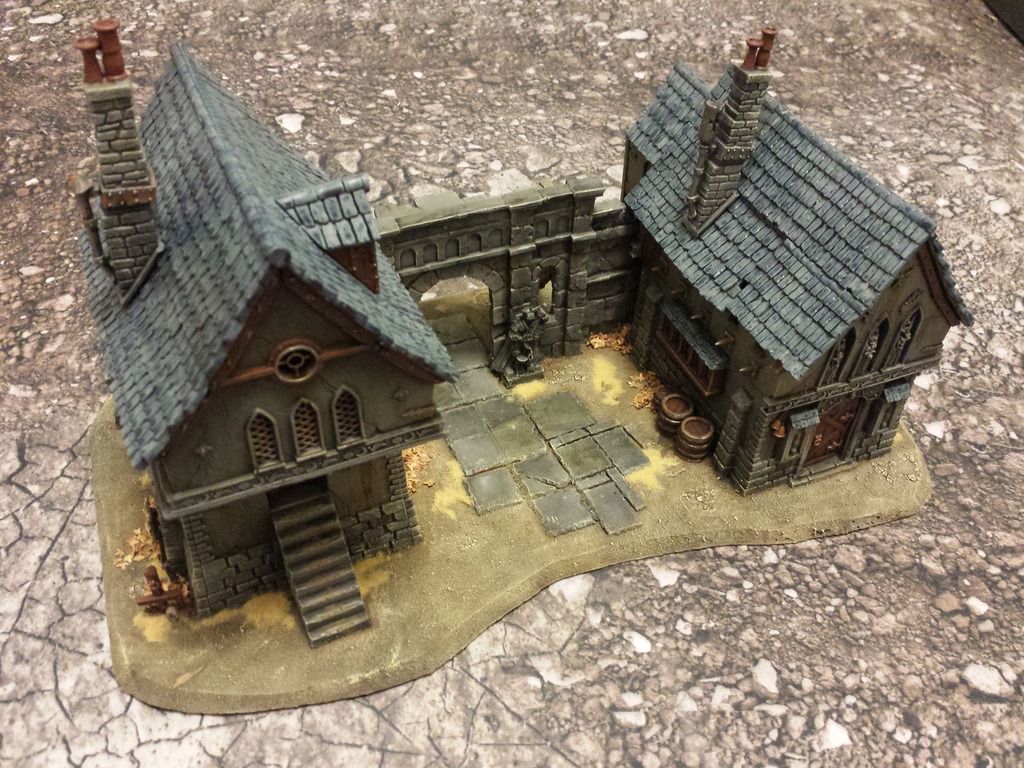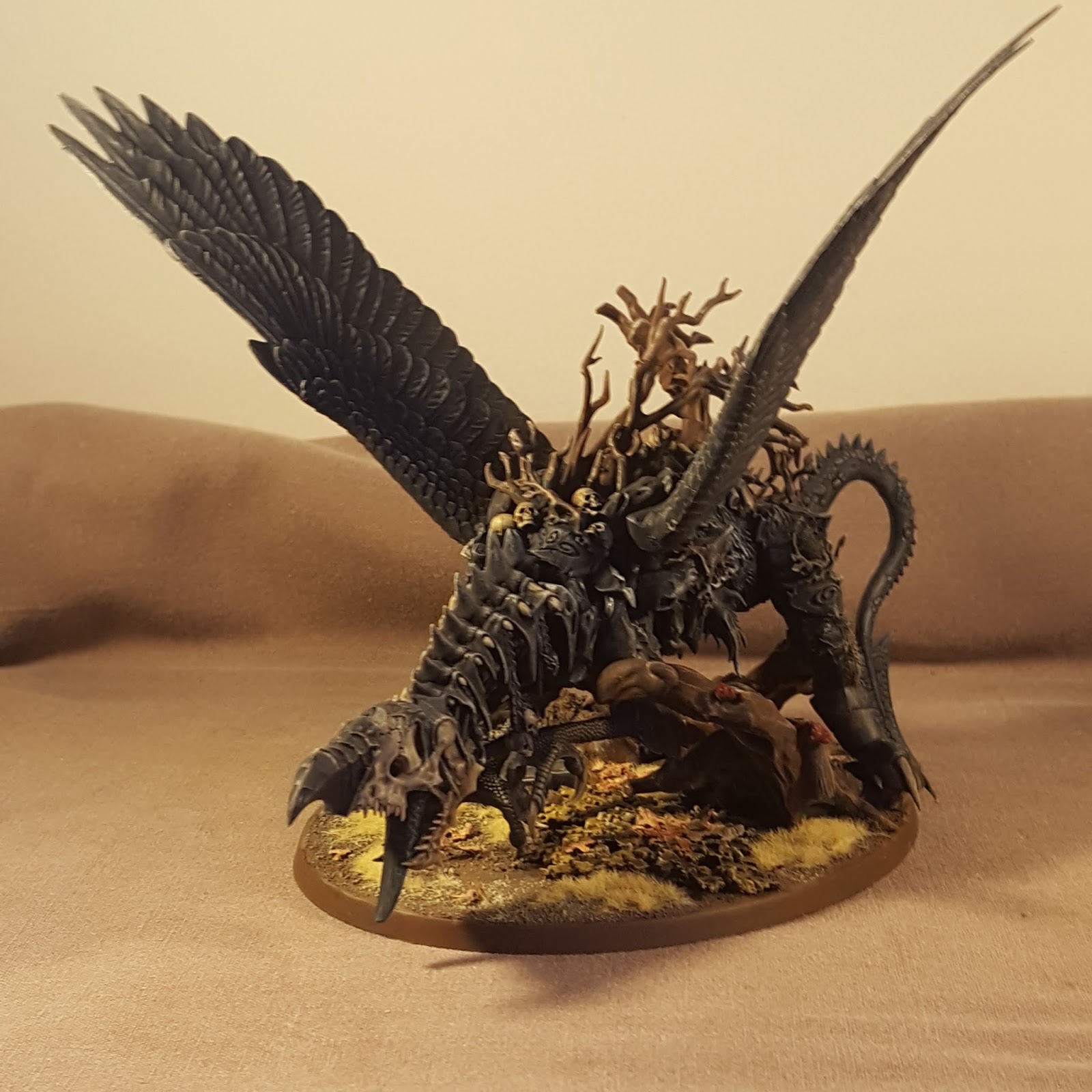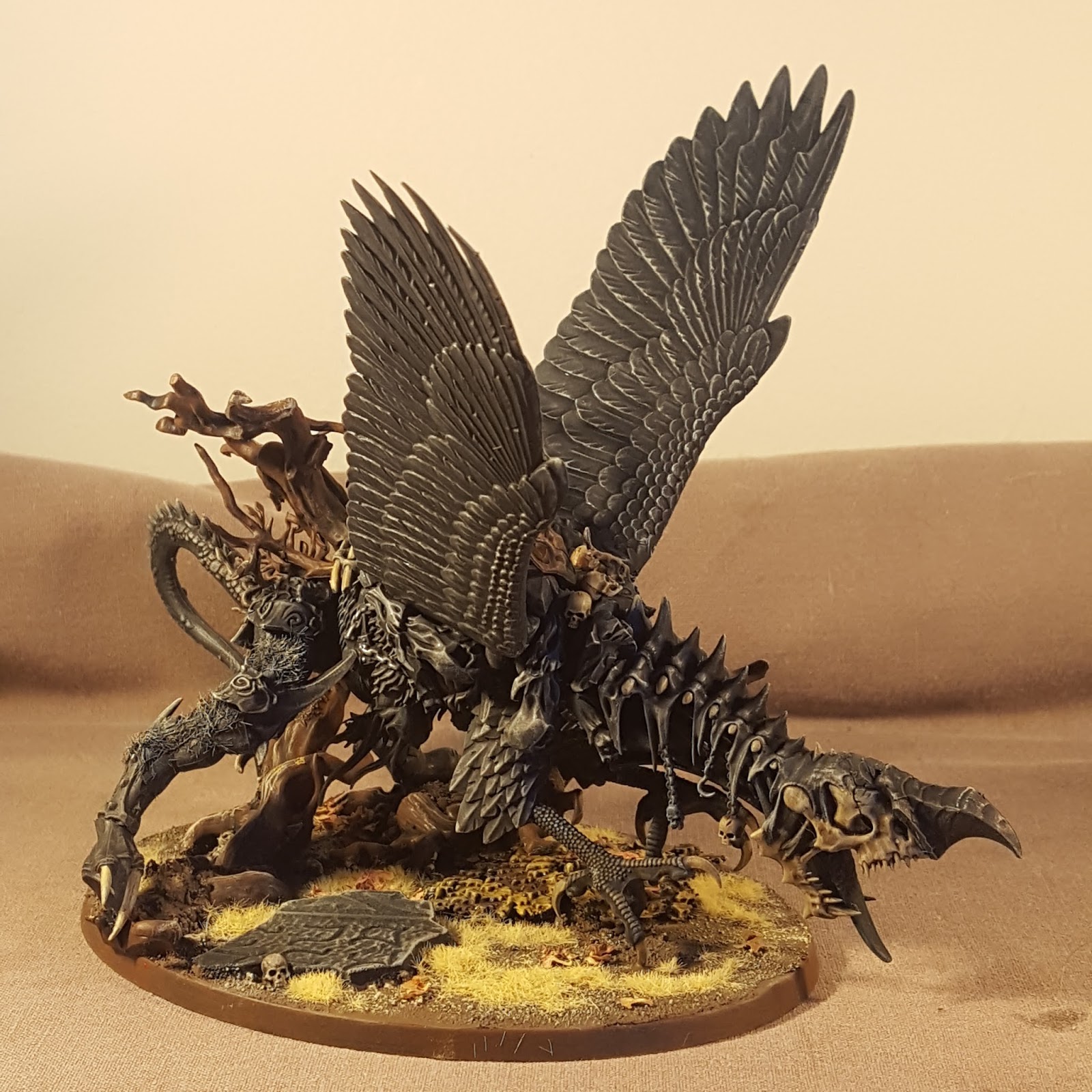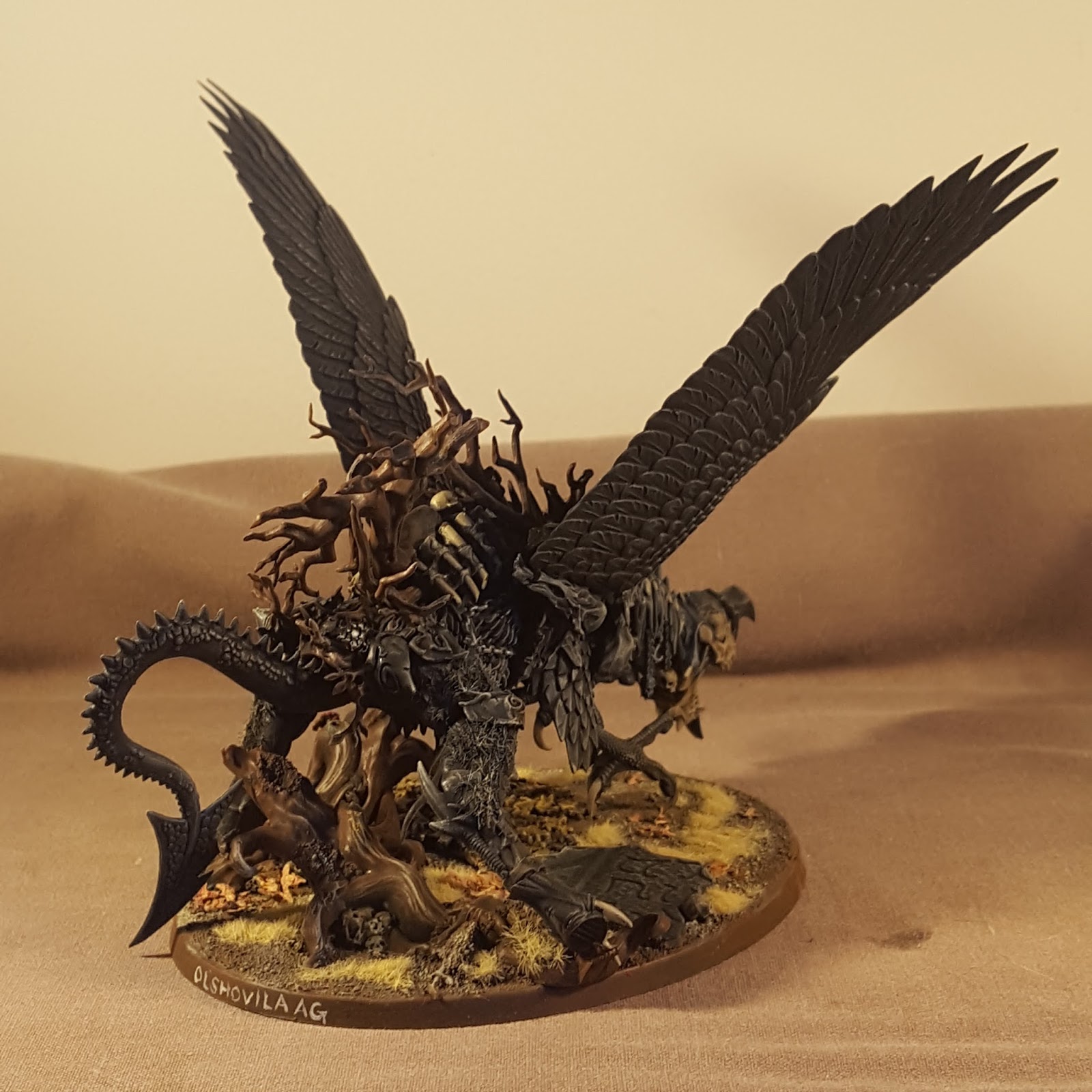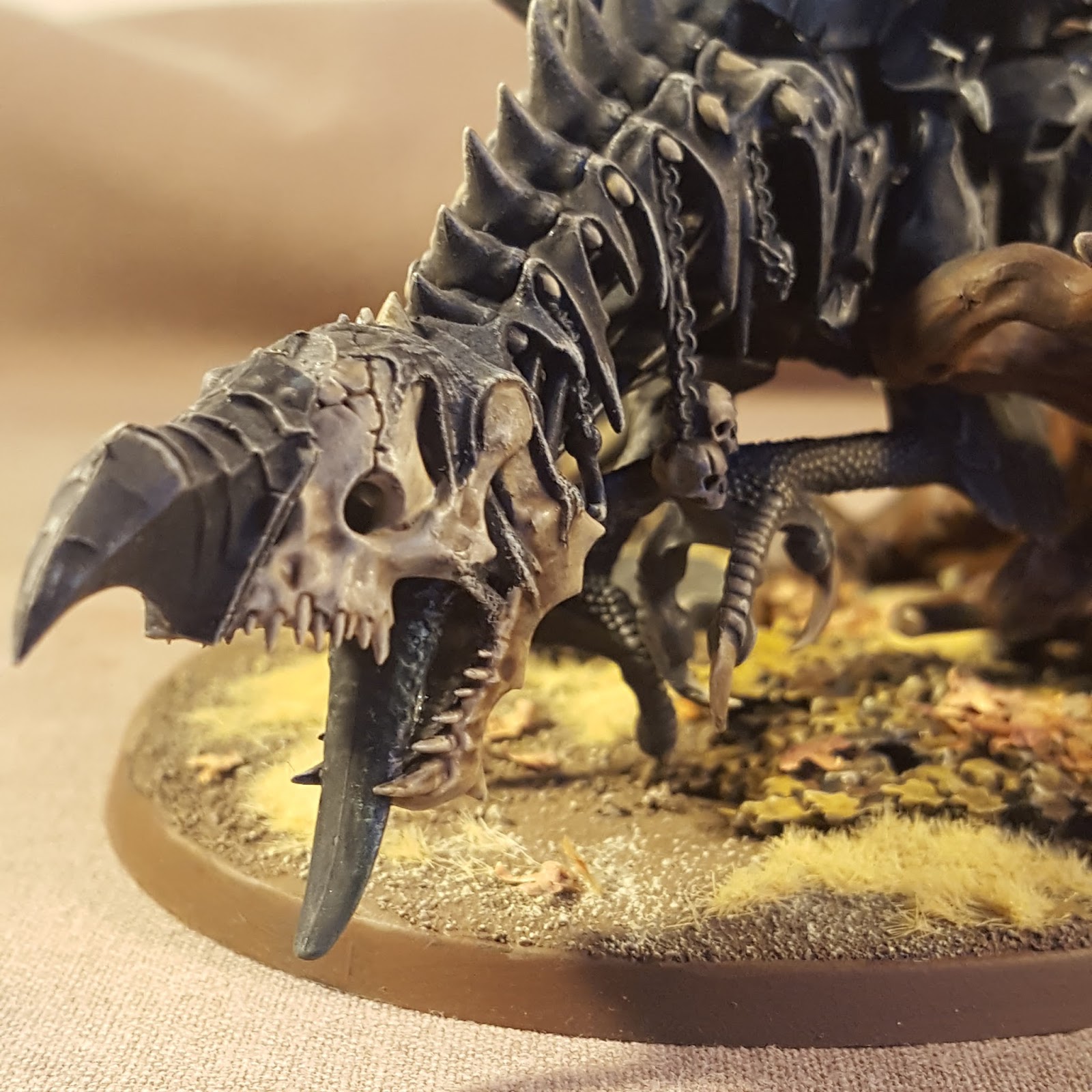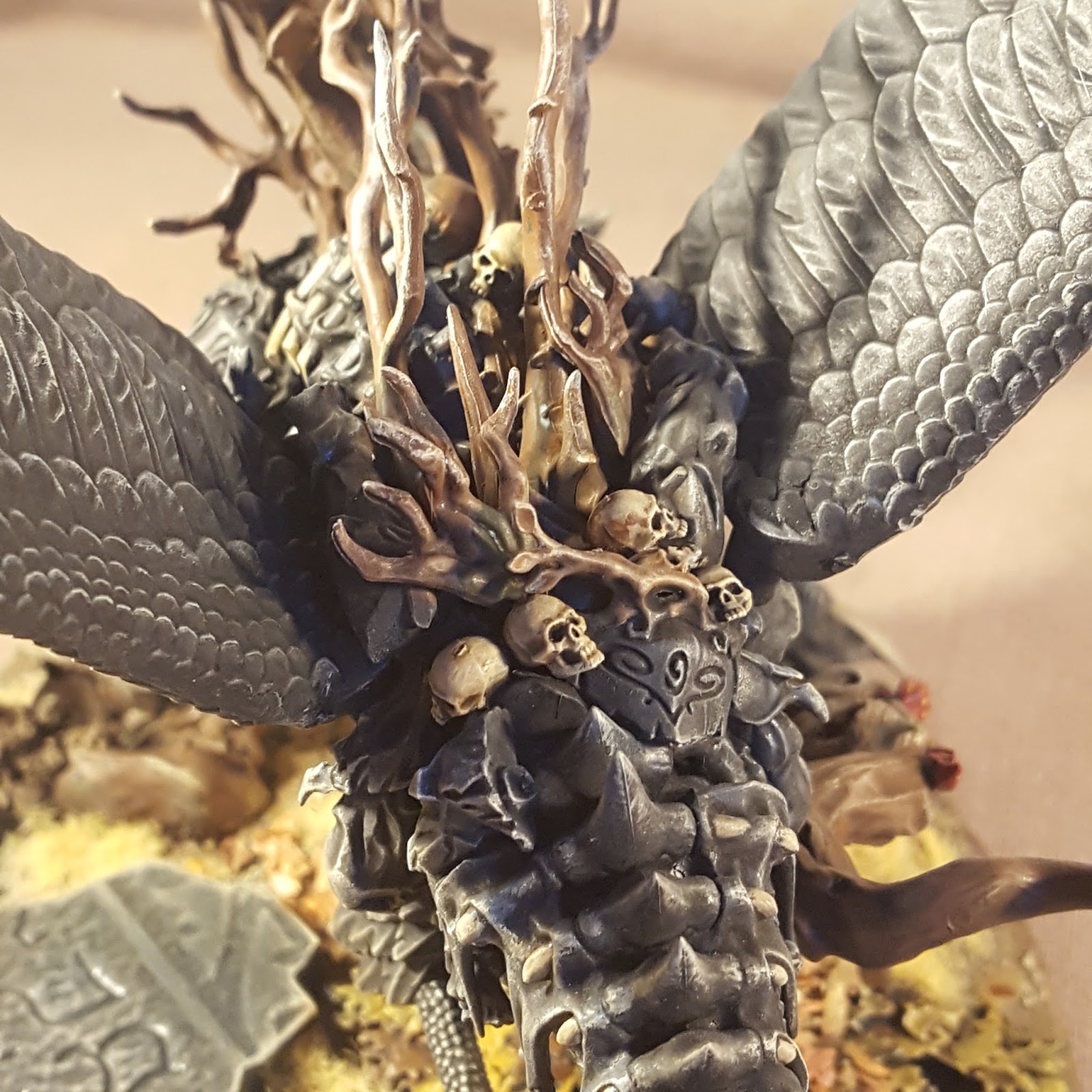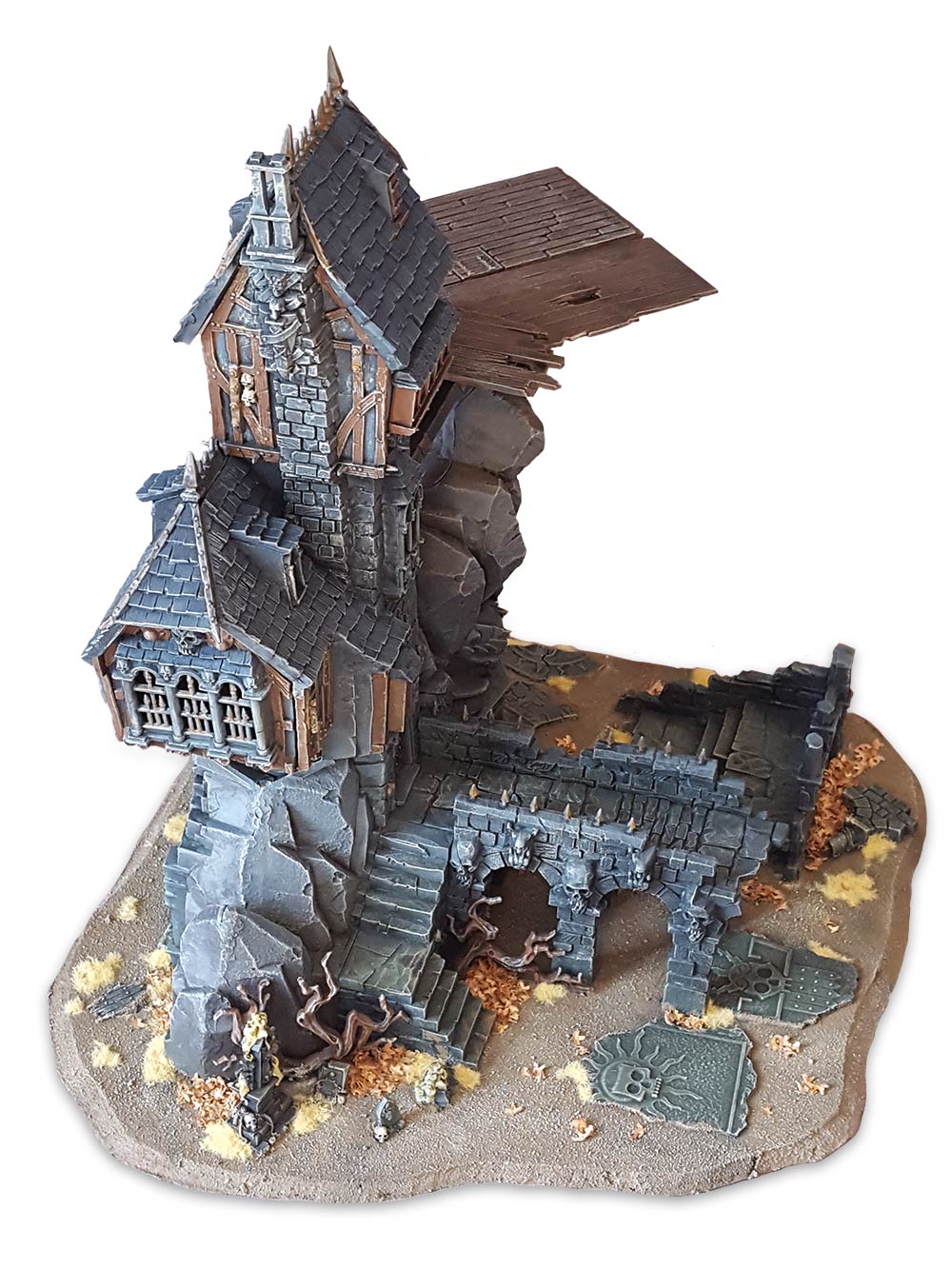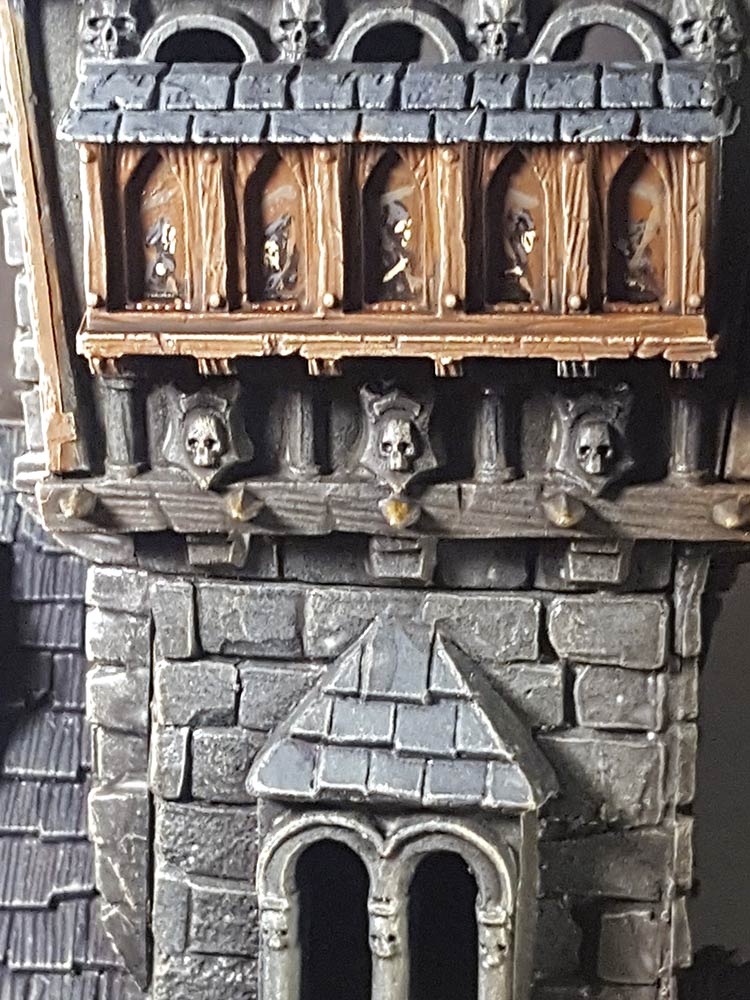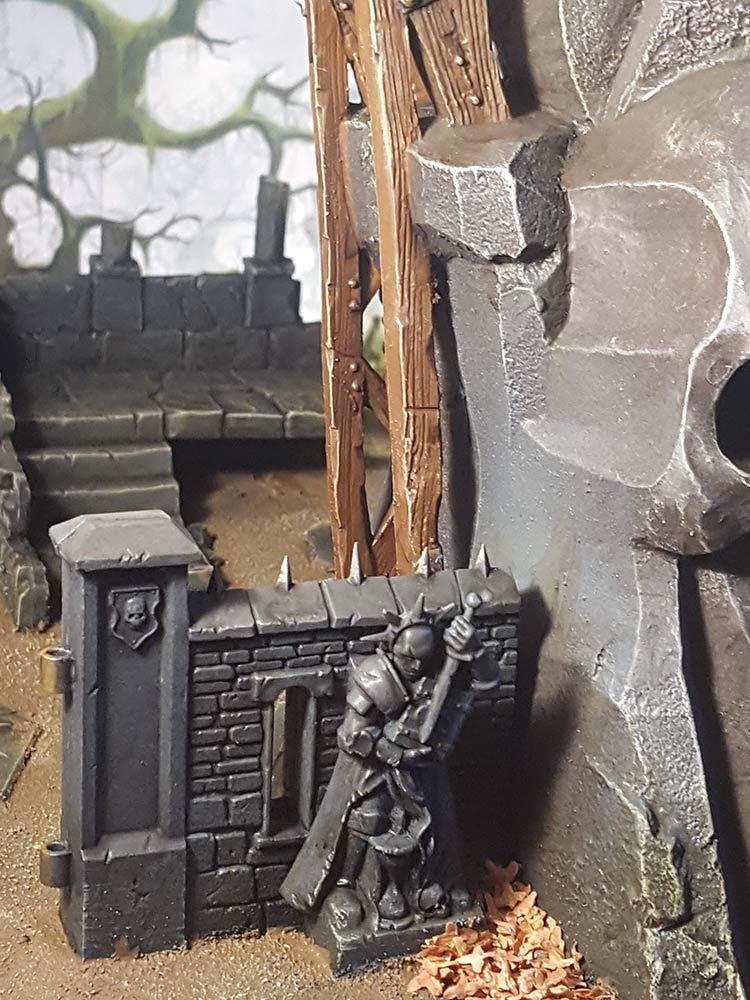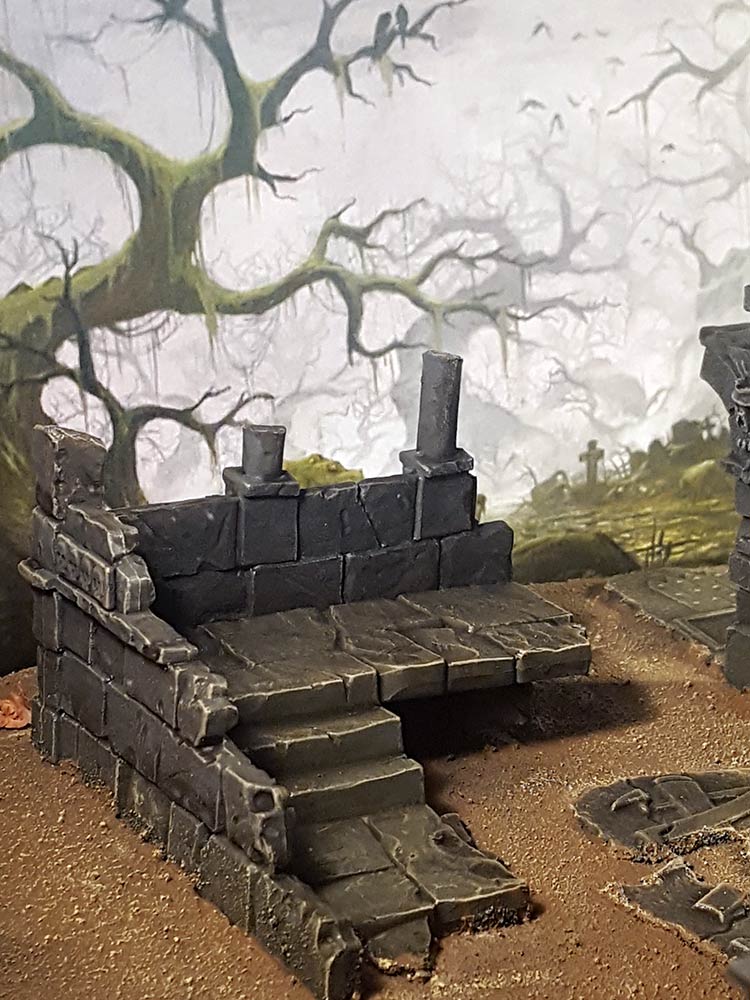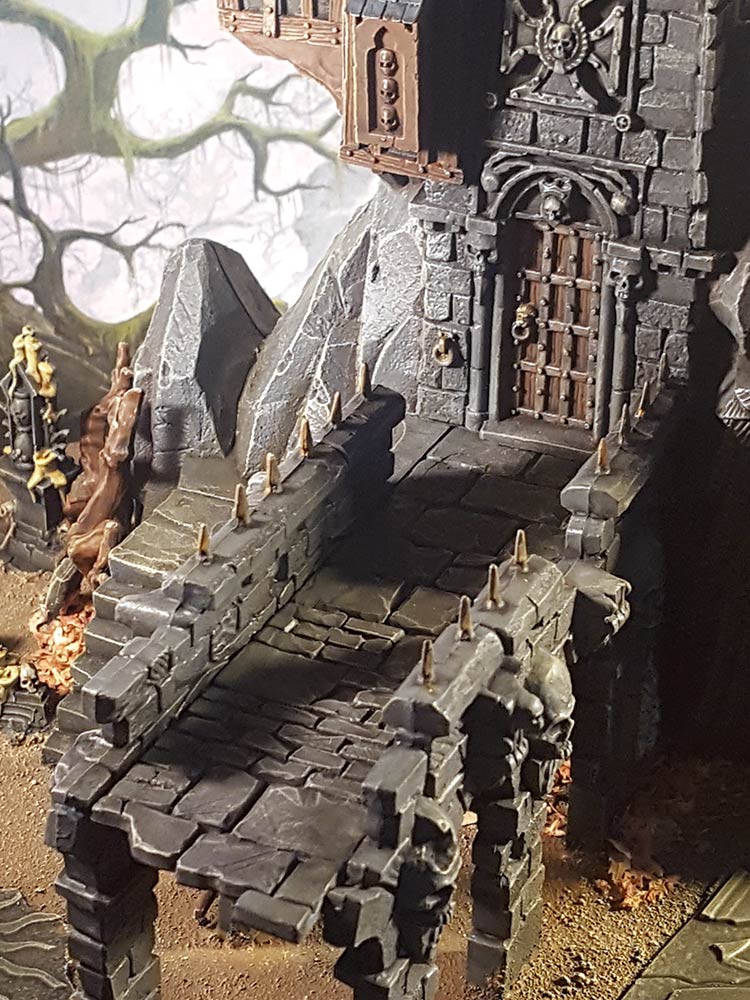Warhammer Age of Sigmar provides an amazing opportunity for hobbyists to explore design and story in creating unique armies and narratives. Whether it is as simple as providing a name or backstory for your characters or themed terrain to a full backstory, maps and conversions that unite your army and ground it in the Mortal Realms. Skirmish and smaller sized games are a perfect way to explore Age of Sigmar narrative wargaming as you build up a full army.
Now, I’m always inspired by some of the amazing work that hobbyists put out and want to know the thought process that led to the result. Hence, the Creator Class series was born. Similar to my Masterclass series with top tier tournament gamers, I will be interviewing skilled hobbyists and creators about their Age of Sigmar narrative projects.

So the first in the series is an interview with Saul Painter, @WarbossKurgan, about his Age of Sigmar narrative project called “The Harrowmark”. Saul creates themed skirmish forces for immersive narrative campaigns and event days for Age of Sigmar, Warhammer 40k and Inquistor 28. You can see all of Saul’s work at his website, and he has even had some of his work showcased on Warhammer Community.
I asked Saul a number of questions about the creation of the Harrowmark. His answers are below. I also took the opportunity to interject with some commentary because there are so many great aspects to the project that I didn’t want them to get left out.
If you are interested in more narrative content, check back to the narrative section of this site (currently a work in progress), and visit the home of the Age of Sigmar Narrative Event Organisers Network (the NEON). For more great looking armies, you can also check out the AoS Shorts Showcase section.
Starting an Age of Sigmar narrative project
AoS Shorts: How do you approach starting a new Age of Sigmar narrative project? What inspires you? Do you seek out inspiration (actively look for art or ideas) or are you inspired (you stumble across something and the creative brain kicks in)?
This is a tricky one to answer as I’m not entirely sure. A new idea will sometimes come from reading or watching something. Sometimes a single line of background text will start me on a whole new project.
Finding a home for an Old World village in the Mortal Realms
The Harrowmark came from the need to give my scenery set a context in the Mortal Realms. The haunted village of Wortbad was started, during Warhammer Fantasy 8th Edition, as a village in Sylvania – the vampire state in the Empire, in the Old World. After the world-that-was ended I was not going to stop using my scenery so I started thinking of a way to ground it in the new setting.
Tips for place names that resonate
I picked the obvious place to start with: Shyish, the Realm of Death. For a few months I was just writing notes and a few descriptive snippets of places around Wortbad. These started to gel and I picked a name for the regions from a shortlist I selected from an online random fantasy place name generator. I chose names that were two real words combined, so it would be easy to read, pronounce and understand even if someone had never seen it before. I chose words that hinted at the kind of place I was creating – autumn, undead, sorrowful, etc.
Once the name was picked I tried to tie together all things I had written before into a coherent whole. I didn’t want to have a map that fixed anything in place as nothing was quite “finished”, so I didn’t want to be restricted in what I could or couldn’t do just yet.
AoS Shorts: Saul really went to town in grounding his narrative with names and details, including:
- The Rose and Scythe, the fortified Coaching Inn. The Rose is a tavern and the The Scythe is the boarding house.
- The Haunted Gate is a Baleful Realmgate in Wortbad, with writhing ghostly forms visible in its internal corona.
- Blackrocks is a ruined and overgrown town in the Harrowmark, some seven leagues from Wortbad and it has been partially rebuilt using materials from skyship-wrecks. Surviving locations include the Freebooter’s Tower, The Hurricane Bell and the Charybdis Occulum.
- Rotshroud Manse is the local skyship dock (more on this later).
Saul devised the local currency, named the months of the local 13 month calendar, considered how Hysh and Ulgu interact in relation to Shyish to define the characteristic low dusty light of the Harrowmark, and described the local monsters in the forest.
The dreaded Olshovilaag, the Fiend of Harrowmark is one such example. A massive undead construct made from a conglomeration of monster parts, horns, huge black-feathered wings, lots of skulls, tree branches, bones, rocks and broken weapons. A Death-monster, born from the forest itself. A crow-winged “Terrorgheist”. The sound of its beating wings fills the villagers of the Harrowmark with dread. It’s screeching stops their hearts and shreds their souls! Saul covered the making of this monster in his TGA blog.
The Voodoo Forest – grounded in art
Then came the Voodoo Forest. John Blanche was working on an illustration project, which later became a beautiful self-published short-run hardback art book. The Voodoo Forest was his own setting, featuring an endless evil forest and pirates in flying wooden ships. His illustrations for it are rich with narrative hooks, dripping with weird character and, to my eye, perfect as an Age of Sigmar setting (even though they were not drawn as such). This work, combined with some of his older flying ship paintings that cropped up in Warhammer over the years, struck a chord with me.


I messaged him on Facebook and asked if he minded if I used elements of his Voodoo Forets in my games and he kindly gave me his blessing.
Expanding the Harrowmark
From then on The Harrowmark (which until then was purely a setting for my Death forces and the Witch Hunters that battled them) became my primary setting for Age of Sigmar campaigns. I wrote my Orruk Pirates into the setting as Orruk Sky Pirates. I rewrote the forests around Wortbad: they were no longer patchy areas of small woods, now they were an almost continuous arboreal nightmare region, punctuated by rocky spires and the occasional clearing with an isolated village. The skyships that sailed above the forest canopy were the only thing that connected the villages, their tenuous lifelines to the wider world. The merchant ships were preyed upon by sky pirates, among which my orruks would feature heavily.
The original Sylvania-set descriptions of the secondary locations were tweaked to better fit the malignant forest setting and we started playing AoS Skirmish campaigns in a darker and more dangerous Harrowmark: 10,000 Leagues of malignant forest in every direction, no matter where you stand.
Sky Pirate ships crashed in the woods and warbands battled to recover the scattered cargo. Sailors fell overboard and their shipmates tried to rescue them from the forest. Horrifying creatures emerged from the woods and terrorised the villagers. Dread forces tried to enact evil plans and heroes stepped up to meet them.
I have now started making orruk skyship models – they will mostly be used as scenery but I may end up trying to use them “counts-as” something else in a game!
AoS Shorts: you can see the start of the development of this skyvessel in this blog post.

Developing your Age of Sigmar narrative idea
AoS Shorts: Once you have an idea, how do you develop it? Vision and storyboards? Sketches? Discussion with others?
All of the above plus a lot of research. When I start a new project I spend a lot of time online looking at what other people have done – for background material, colour schemes, story and character hooks, build ideas, etc. This image was my start point for Wortbad and my touch-stone for the rest of the Harrowmark:

The colour scheme and atmosphere is what I have been aiming for with the entire scenery set.
How do you keep enthusiasm for a major hobby project?
Sheer bloody mindedness sometimes. Sometime a project is left on the back burner and I will come back to it later. Sometimes things get abandoned and left incomplete. This doesn’t bother me as long as I am being productive and making things I am happy. I enjoy the process more than anything. The satisfaction of finishing something is not a big motivaton, in fact I don’t think I will ever call any project truly finished as I will always come back and add something if there is something that reignites my interest in the project.
The Harrowmark has been the recurring setting for many of our campaigns. Each time we have returned there I have added something to the scenery set. Sometimes something small, sometimes a major scenery project. The latest large addition was Rotshroud Mance – the Wortbad Skydock, which was featured on the Warhammer Community blog! So I now tell people the Harrowmark is canon… 😉

Transferring the Age of Sigmar narrative to your models
AoS Shorts: What is the interaction between the story idea and the models and settings you create? Is it an iterative process in that the available models and bits impact the development of the narrative
The models normally come first and the story follows them. But it does loop back on itself as the story sometimes leads to new characters that I need to make in model form.
AoS Shorts: Saul has populated the Harrowmark with the Rotmoons, a pirate Orruk warband, and the Sky-Pirates of the Harrowmark skyvessel The Selachii. Check out his blog for a series of paired battle reports, where the same skirmish battle is reported separately by each side. A great touch for continuing the narrative. Follow the “Thy Soul to Keep” tag for more 🙂


Age of Sigmar narrative rules development
AoS Shorts: Do you consider the fairness of a game between players in the rules you design, or does narrative defy fairness?
This is not something I really think about as I don’t really write rules for anything. I generally try to fit my creations into the existing rules, but I also don’t like to let the rules become a limit to what I can or can’t make. In my group “fairness and balance” take a back seat to the narrative – the story is more important than winning or losing an individual game.
For our last few campaign we have collectively sketched out a plot first, then picked Battleplans that fit in with the key turning-points of the story, we call this the “A-plot”. To them we have added a few other Battleplans that are used to fill in “B-plots”. We play an A-plot when all four of us can get together, and a B-plot when only two or three of us can play. This way we know the basic outline of the story we are taking part in, so we can write narrative battle reports that fit in with it, but we allow the story to change and evolve along with events that unfold on table.
We are currently in the last few weeks of a campaign set in the Harrowmark, called “Thy Soul to Keep” and we have plans for three more campaigns with different settings when it finishes. We aren’t sure which one of those will start first, but we all now we will return to the Harrowmark soon as it is our perennial setting.
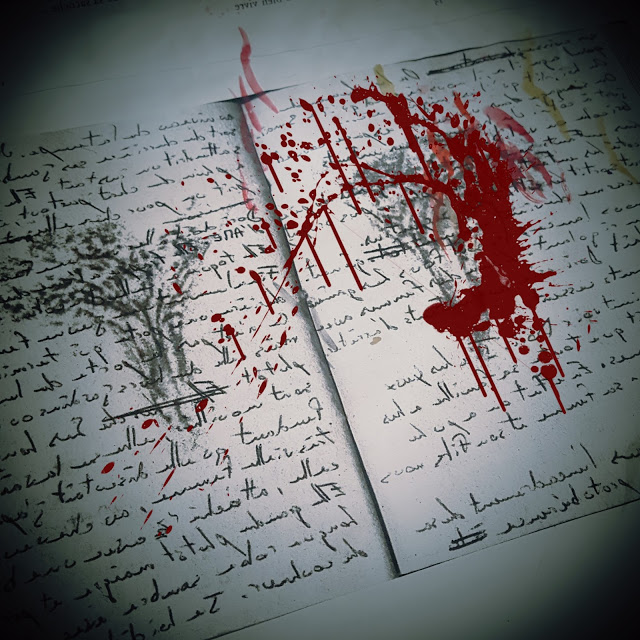
The Story of the Harrowmark
The Harrowmark in Shyish, has long been considered a cursed and backward region, it has gained an ill reputation for being both a refuge for sorcerers and necromancers, and where the dead do not rest long in their graves.
Most of the Harrowmark is virtually impenetrable forest: Seemingly endless miles of dark, tangled, twisted and corrupted forest. Things live in these forests: malignant, spiteful things. It is a brave soul that ventures under the dark bowers, brave or foolish, as few who attempt to navigate the winding pathways ever emerge again.
The scattered villages and hamlets of the Harrowmark are isolated by the forests and parochial as a result. Grubbing what existence they can from the infertile stoney land, the peasants live in small communities of inter-related families, and never venture far from their crude hovels that cling to one of the many rocky outcrops that punctuate the forest canopy. There are few stone roads here; rutted, half-flooded tracks and paths link most villages, all but impossible to navigate. At times, the mud itself seems to be a living thing, clawing at the legs of the weak and dragging them to a suffocating death. The populace are for the most part concerned with day-to-day survival, raising famished, skinny goats and pigs, tending to what scraps of farmland they have in the hope of gathering enough crops to survive.
The villages are in a constant state of disrepair and have barred or boarded windows and heavy doors to keep out the night’s predators. Crude fetishes and charms of a dozen gods hang on every lintel and frame. The villagers daub symbols of protection on their doors with pig’s blood, to guard against the unnatural horrors of this frightful land. Hanging outside the gates of the most desperate townships can be found criminals and travelers caged in iron maidens, their only companions the crows and vampire bats that feed on them.
Wortbad is just such a village, in the middle of the Harrowmark, it is deeply troubled by the undead and corrupted by dark magic. It is surrounded by haunted forests and overlooked by the jagged, foreboding Everdark Peaks. It is a land of perpetual autumn, where farmland lies fallow and untended, with crops rotted in the fields.
Above the heads of the Harrowmark’s inhabitants many floating islands drift over the corrupted forests, often in small groups of various sizes, ranging from little more than boulders to great upturned mountains. Most are topped with the same twisted and stunted trees, hinting that the islands may have once been rooted in the ground below. A few also have a small cluster of houses or a watchtower built into them almost always accompanied by a wooden gantry or pier, built to facilitate docking the flying ships that are the only way to traverse the terrible forests in relative safety.
If you want to know more about Age of Sigmar narrative play
- Check out Saul’s excellent blog
- Follow the NEON website for more narrative resources
- Check out AoS28, the Dark Age of Sigmar
- Try your hand at Warhammer Skirmish or one of the off-shoots, Path to Glory, Renown and Ruin, Hinterlands etc.
Please get in touch and let me know what you think of the series. Are there other questions you would have asked? Which other creators should I have on the series? As always, you can contact me through the website, on Twitter, or Facebook.

